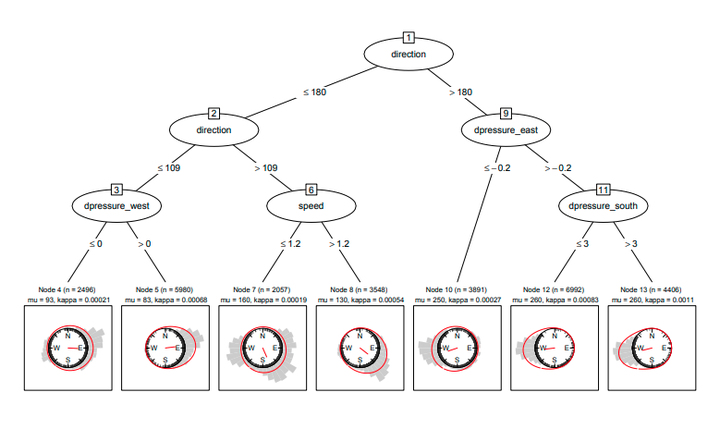Circular regression trees and forests with an application to probabilistic wind direction forecasting
 Image credit: Moritz N. Lang 2021
Image credit: Moritz N. Lang 2021
Although circular data occur in a wide range of scientific fields, the methodology for distributional modelling and probabilistic forecasting of circular response variables is quite limited. Most of the existing methods are built on generalized linear and additive models, which are often challenging to optimize and interpret. Specifically, capturing abrupt changes or interactions is not straightforward but often relevant, e.g. for modelling wind directions subject to different wind regimes. Additionally, automatic covariate selection is desirable when many predictor variables are available, as is often the case in weather forecasting. To address these challenges we suggest a general distributional approach using regression trees and random forests to obtain probabilistic forecasts for circular responses. Using trees simplifies model estimation as covariates are used only for partitioning the data and subsequently just a simple von Mises distribution is fitted in the resulting subgroups. Circular regression trees are straightforward to interpret, can capture non-linear effects and interactions, and automatically select covariates affecting location and/or scale in the von Mises distribution. Circular random forests regularize and smooth the effects from an ensemble of trees. The new methods are applied to probabilistic wind direction forecasting at two Austrian airports, considering other common approaches as a benchmark.